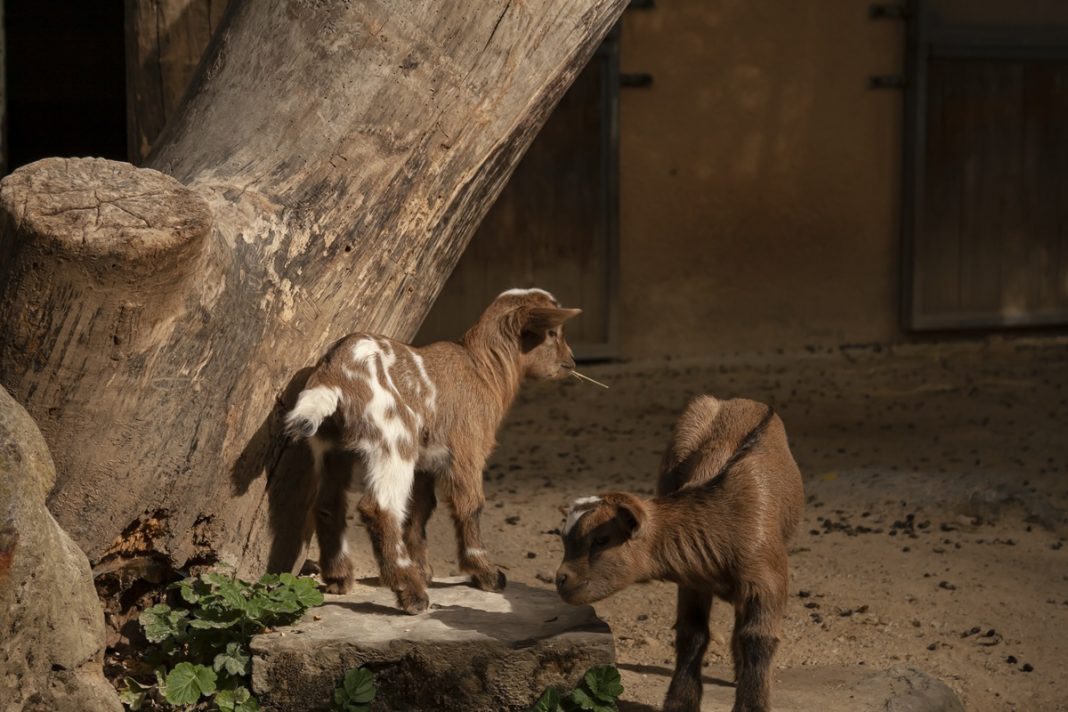Kidding Management
Master the essential techniques for successful goat breeding, delivery, and newborn care with comprehensive management practices
Kidding Success Metrics
Critical timeframes and care requirements for optimal birthing outcomes
Comprehensive Kidding Guide
Detailed protocols for every stage of the reproduction cycle
Breeding Season Planning
Goats typically reproduce in autumn with shorter days triggering estrus. Early spring kidding is optimal for better growth rates, reduced mortality, and farmer comfort. Commercial producers must plan breeding cycles for steady market supply.
Pre-Breeding Requirements
Doelings should reach 65% of adult weight before breeding. All does must be in excellent condition before buck introduction. Ensure proper nutrition, water, shelter, and veterinary care are established.
Health Preparations
Complete hoof care, vaccination updates, lice treatment, and deworming 4-6 weeks before expected kidding. CDT vaccination for pregnant does 30 days before delivery protects newborns through colostrum.
Housing Setup
Prepare clean, dry kidding area 15 days before expected delivery date. Provide fresh straw bedding, proper ventilation, and easy access to water. Isolate pregnant does from main herd if needed.
Labor Signs Recognition
Watch for withdrawal behavior, increased bleating, decreased food intake, and white mucus discharge. These signals indicate the doe is preparing for delivery. Maintain vigilant observation without interference.
Three-Phase Delivery
Phase 1: Relaxation and opening (few hours duration). Phase 2: Active labor with abdominal contractions (30 minutes average). Phase 3: Afterbirth expulsion (up to 8 hours for complete membrane discharge).
Normal Presentation
Typical birth position: head resting on feet with front hooves pointing downward. Baby should be delivered within 30 minutes of water breaking. Hooves pointing upward indicates breech position requiring assistance.
Difficult Birth Assistance
Use aseptic procedures when intervention is necessary. Most assistance involves correcting leg or neck position. Young does may need extra time. Consult veterinarian for cesarean section in extreme cases.
Immediate Airway Care
Clear kid’s nose, mouth, and ears with dry cotton cloth immediately after birth. Remove placental coating through gentle rubbing. Hold kid upside down by hind legs if breathing difficulties occur to clear airway.
Umbilical Cord Management
Cord should break naturally after delivery. Apply iodine tincture or antiseptic to navel to prevent infection. Ensure complete drying of ears and tail in winter conditions to prevent freezing.
Colostrum Critical Window
Verify doe’s milk availability and open teats immediately after delivery. First colostrum feeding must occur within 30 minutes of birth. Kid requires 2 ounces in first 6 hours, 4-6 ounces within 24 hours.
Emergency Feeding Protocol
If kid is weak or not nursing, tube feed colostrum directly into stomach within first hour. Mother’s colostrum is preferred, but other does’ colostrum is acceptable. Immunoglobulin absorption decreases rapidly with time.
Doe Post-Delivery Care
Disinfect birthing area immediately. Wash doe’s rear end with iodine or neem water. Provide warm feed mixture with ginger, salt, and sugar plus sweet water for recovery and energy restoration.
Kid Processing Procedures
Implement identification marking through tattoos, tags, or paint branding for accurate record-keeping. Consider disbudding, de-scenting, wattle removal, and castration during weaning period as appropriate.
Vaccination Schedule
Kids from vaccinated mothers protected for 2 months. Begin 7-8 disease vaccination at 5-6 weeks with booster 3-4 weeks later. Annual boosters required after 6 months. Maintain detailed vaccination records.
Weaning Management
Dairy goat weaning begins at 2 weeks with hay and grain introduction, completed by 6-8 weeks. Meat goat producers may allow longer nursing periods. Group processing reduces labor and improves record-keeping efficiency.
Essential Management Protocols
Critical care techniques for successful kidding outcomes
Breeding Management
Plan breeding cycles for optimal timing and market demand. Track heat cycles and breeding dates carefully. Hand breeding improves record accuracy, while pasture breeding reduces costs but complicates tracking.
Key Timing: 150-day gestation period, early spring kidding preferred, 4-week maximum kidding period for efficient management and uniform kid development.
Emergency Protocols
Recognize normal vs. difficult births immediately. Bluish coloration of nose and tongue indicates delayed delivery requiring intervention. Maintain aseptic conditions during any assistance procedures.
Critical Signs: Water breaks without delivery in 30 minutes, improper kid positioning, prolonged labor beyond normal duration, doe showing distress symptoms.
Growth Monitoring
Track weight loss in first 12 hours (normal 10-20% of birth weight). Monitor daily weight gain and nursing behavior. Kids should show steady growth with proper nutrition and health management.
Development Goals: Consistent daily gains, proper weaning transition at 3-4 months based on market strategy and body weight targets, vaccination schedule adherence.
Kidding Process Timeline
Step-by-step progression from pre-birth preparation through weaning
Complete health protocols: vaccination updates, hoof trimming, deworming, lice treatment. Prepare clean kidding area with fresh bedding and proper ventilation.
Monitor for behavioral changes: withdrawal, increased bleating, decreased appetite, white mucus discharge. Move doe to prepared kidding area for observation.
Water breaks, abdominal contractions begin. Kid should be delivered within 30 minutes. Monitor presentation – head on feet, front hooves down is normal position.
Clear airway, remove membranes, dry thoroughly. Apply iodine to navel. Ensure first colostrum feeding within 30 minutes. Allow doe-kid bonding through licking.
Monitor nursing behavior closely. Kid requires 2 ounces colostrum in first 6 hours, 4-6 ounces within 24 hours. Immunoglobulin absorption decreases rapidly with time.
Begin hay and grain introduction at 2 weeks for dairy kids. Complete weaning by 6-8 weeks. Implement identification marking and processing procedures as needed.
Contact veterinarian immediately if: water breaks but no delivery in 45 minutes, kid positioned incorrectly, doe showing severe distress, retained placenta beyond 8 hours, kid not breathing or nursing, signs of infection in doe or kid.
Keep ready: clean towels, iodine tincture, colostrum feeding tube, sterile gloves, birthing lubricant, veterinary contact information, scale for weighing kids, identification tags or markers, vaccination supplies.
Master Professional Kidding Management
Implement proven protocols for successful breeding outcomes and healthy kid development


